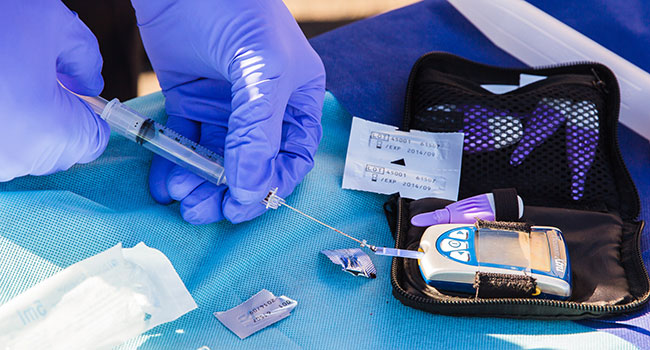A team of researchers led by a University of Alberta pharmacology professor has mapped the function and gene expression of individual insulin-producing cells within the human pancreas, opening new paths of research for diagnosing and treating diabetes.
“There’s been a lot of excitement the last few years about understanding how pancreatic beta cells make insulin,” said Patrick MacDonald, who is also a member of the Alberta Diabetes Institute and director of IsletCore, the largest islet tissue repository in the world.
“It turns out that not all insulin-producing cells are the same,” MacDonald said. “There’s a lot of variability in gene expression, and we’ve been able to show that this variability extends to the function of these cells.”
The researchers examined 1,369 beta cells taken from pancreatic islets of 34 human donors, with and without diabetes. Using single-cell RNA sequencing and electrical measurements, they created a map or atlas of the genetic pathways that drive insulin secretion.
Then they identified which genes may cause dysfunction in the cells of donors with Type 2 diabetes and manipulated the gene expression to restore the cells’ function. MacDonald cautioned that his lab’s work is not a treatment ready for use in patients, but rather a “proof of concept” to validate the pursuit of further research to understand the molecular differences that have been mapped.
For example, the approach will help in understanding how patient genetics contribute to the risk of developing Type 2 diabetes. The beta cell gene maps that MacDonald and his group are generating may also hold clues as to why some insulin-producing cells survive the autoimmune attack that causes Type 1 diabetes.
“Scientists have identified hundreds of different genetic signals for diabetes, many of which act on beta cells, but there’s still a lot that we need to learn,” MacDonald said.
“This atlas is a resource that contains a lot of data that can be mined to try and find drug targets, new disease markers and insights into how diabetes develops.”
The World Health Organization estimates that diabetes affects 422 million people worldwide and accounts for 1.6 million deaths each year. It’s been nearly 100 years since the first diabetic patient was given the life-saving treatment of an insulin injection, thanks in part to the University of Alberta’s James Collip, who was on a research sabbatical at the University of Toronto in 1921 when he purified the first dose.
Diabetes care took another giant leap forward 20 years ago when the Edmonton Protocol for islet cell transplants was developed by a U of A team and adopted around the world.
The U of A also houses IsletCore, a world-leading human islet tissue repository, founded by MacDonald to complement the clinical islet cell transplant work. Donated pancreases that are not used for clinical transplantation in Canada are sent to IsletCore – if the donors and their families have given research consent – and processed for study.
The islet cells are sent to 120 diabetes research centres around the world and the results are then sent back to contribute to a growing research repository, which MacDonald hopes will contribute to understanding and treating diabetes.
“It’s a deep phenotyping program, where we are trying to understand how the function of islets varies across the human population depending on age, sex, body mass index, genetics and so on,” MacDonald explained. “We want to make as much information as possible available to as wide a group of researchers as possible.”
| By Gillian Rutherford
This article was submitted by the University of Alberta’s online publication Folio, a Troy Media content provider partner.
The views, opinions and positions expressed by columnists and contributors are the author’s alone. They do not inherently or expressly reflect the views, opinions and/or positions of our publication.



